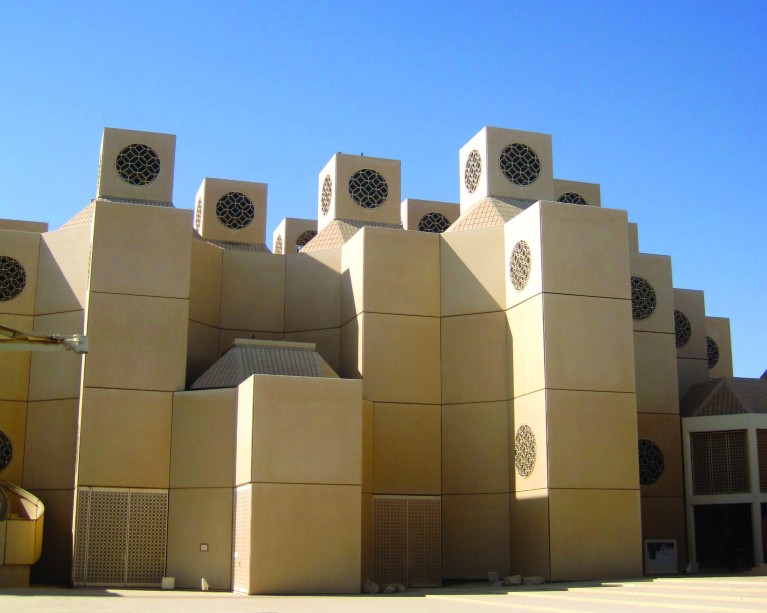
Qatar University is spearheading Qatar’s efforts to diversify its economy away from fossil fuels. Credit: Qatar University
Qatar University hones research efforts on the country’s biggest development needs.
Since 2008, more than 2% of Qatar’s annual income has been allocated for education and research. As the leading national university, Qatar University benefited from these resources in upgrading its infrastructure to support teaching and research. This effort culminated in the inauguration of the Research Complex, a state-of-the art research facility hosting the university’s major research centres, offering national and international scholars cutting-edge technologies to conduct research focused on the country’s research priorities.
Qatar has long been focused on diversifying its economy from being solely dependent on its hydrocarbon industries. The Qatar National Vision 2030 emphasises the importance of establishing a knowledge-based economy centred on innovation, entrepreneurship, excellence in education, a world-class infrastructure, efficient delivery of public services, and a transparent and accountable government.
The country’s ambitious vision rests on four pillars of development: human, social, economic and environmental. Establishing private-public partnerships to develop an effective system for funding scientific research plays an important role in the country’s strategies to support these pillars. The country encourages industry to benefit from the entrepreneurial academic expertise centres to fill the need for applied research.
Encouraging partnerships with industry
Private-public partnerships for research was a major theme through the Qatar University Annual Research Forum & Exhibition 2017, held on 3-4 May at the institution’s research complex, which houses the largest six of the university’s 17 research centres of excellence.
Over the years, Qatar University has developed partnerships with governmental authorities, as well as the key players in industry, especially for oil and gas research. These include major companies in Qatar such as Qatar Petroleum and Qatar Petrochemical Company. One of the university’s particularly fruitful relationships is with ExxonMobil Research Qatar (EMRQ), whose main research interests are in the areas of environmental management, water reuse, liquefied natural gas safety and coastal geology.
Qatar University and EMRQ first collaborated in 2010, conducting a comprehensive ecosystem analysis of a 35km stretch of land and seawater along Qatar’s coastline. Throughout the project, the researchers were able to identify scores of new species that were not previously known to exist in the zone.
They have also partnered to research industrial wastewater reuse technologies, particularly via phytomediation, which involves using plants in an engineered wetlands system to clean and process industrial wastewater naturally. This could provide an alternative water resource for Qatar, explains Christopher Warren, environmental research lead for EMRQ.
In 2015, the two institutions also launched the Qatar University ExxonMobil Research Scholars Programme, which supports post-graduate research in the areas of water reuse, and environmental risk assessment and monitoring.
This collaboration extends beyond the walls of laboratories. Along with the government’s National Center for Educator Development, they regularly co-organise ‘teacher academies’ to enhance mathematics and science teaching skills among primary school teachers in the country.
Qatar University has also partnered with construction company Qatari Diar Vinci Construction to sequester carbon dioxide using native microalgae species that have been isolated from the local environment. “Each kilogram of algal biomass can mitigate approximately 1.8 kg of CO2,” says Hareb Al-Jabri, manager of Qatar University’s Algal Technologies Programme and lead principle investigator of this project. “We can increase the mitigation of CO2 further by selecting the right fast-growing strain.”
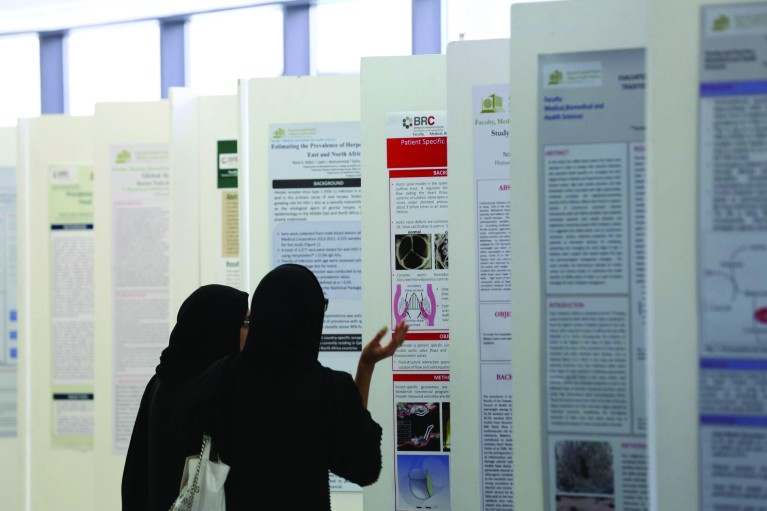
By partnering with the private and public sectors, Qatar University has developed various research projects ranging from cleaner fuels to marine conservation. Credit: Qatar University
As algae grow, they produce metabolites that can then be processed into bio-products. For this specific project, produced algal biomass will be processed to extract any valuable by-products. The residue will be converted to bio-bitumen, which is important for use in roadway construction as an asphalt binder. Demand for bitumen is exceptionally strong, and it has a high market value, says Al-Jabri, but a more environmentally friendly alternative product is needed. The research team hopes to produce bio-bitumen instead.
In the field of marine biology, Qatar Petroleum is funding a long-term project managed by Qatar University’s Environmental Science Center to conserve the hawksbill turtle, the only turtle species that nests in Qatar. The project involves keeping turtle nesting areas clean, tagging and registering their movement and activities, in addition to gathering data on eggs.
Researchers observing hawksbills off the coast of Qatar found that the turtles are generally smaller and lay fewer eggs than those found elsewhere in the world. “The hawksbill is threatened in the Arabian Gulf,” says Ibrahim Al-Maslamani, manager of marine operations at Qatar University, who leads the project.
The hawksbill turtle is categorised as critically endangered on the International Union for Conservation of Nature’s Red List. Major threats to hatchling hawksbills in Qatar include predators and strong city lights, which attract them to urban areas instead of the safety of the seawaters. Al-Maslamani says plastic bags in the water are another threat, because the turtles mistake them for jellyfish and eat them.
The most international university
Qatar University’s research collaborations extend beyond collaborations with local and international industry leaders. It topped the list of the Times Higher Education (THE) “most international universities” for 2015/2016, followed by the University of Luxembourg and the University of Hong Kong.
Until 2016, the list was based on THE’s international outlook indicator, which considers institutions’ proportions of international staff and students, and research papers published with at least one co-author from another country. Changes to the list’s criteria have caused Qatar University to drop out from the rankings this year. Qatar University is ranked 37 in the QS Top 50 Under 50 (which ranks the fastest-rising young universities from around the world) for 2018.
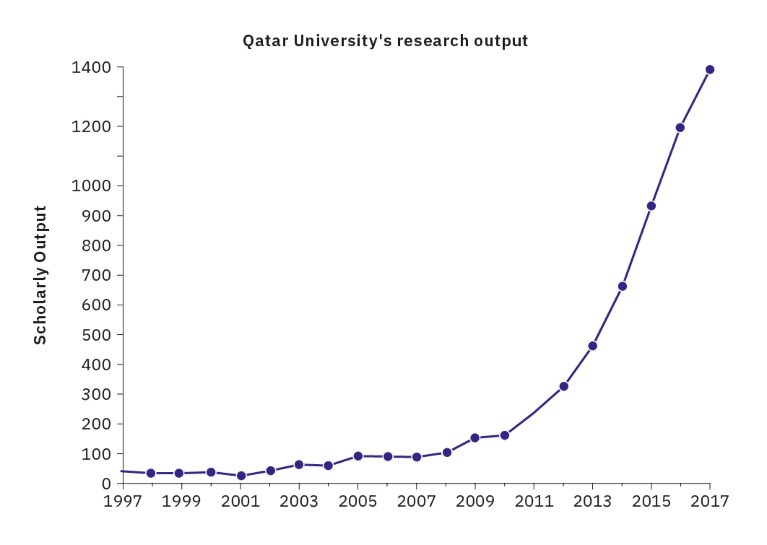
Qatar University’s research output has increased exponentially over the past six years, boosted by increased funding and new international partnerships.
Qatar University’s research output has significantly increased in the past few years, says Mariam Al-Maadeed, Qatar University’s vice-president for research and graduate studies. In the 15-year period from 1996 to 2010, for example, the university’s faculty published around 2,000 studies. But, in the past six years alone, the university published almost 5,704 studies, garnering more than 25,575 citations and a field-weighted citation impact of 1.48. Strong collaboration with international partners and industry has introduced new funding mechanisms that have encouraged publications and involvement in graduate studies.
“Partners from all over the world contribute to cutting-edge research projects, with growing involvement from the industrial sector in Qatar,” says Al-Maadeed.
Since 2012, Qatar University has collaborated with 1,765 institutions from around the globe, adds Al-Maadeed. Of these, 380 are in North America, 606 are in Europe, 448 are in the Asia-Pacific, 162 are in the Middle East, 110 are in Africa and 52 are in South America, she says.
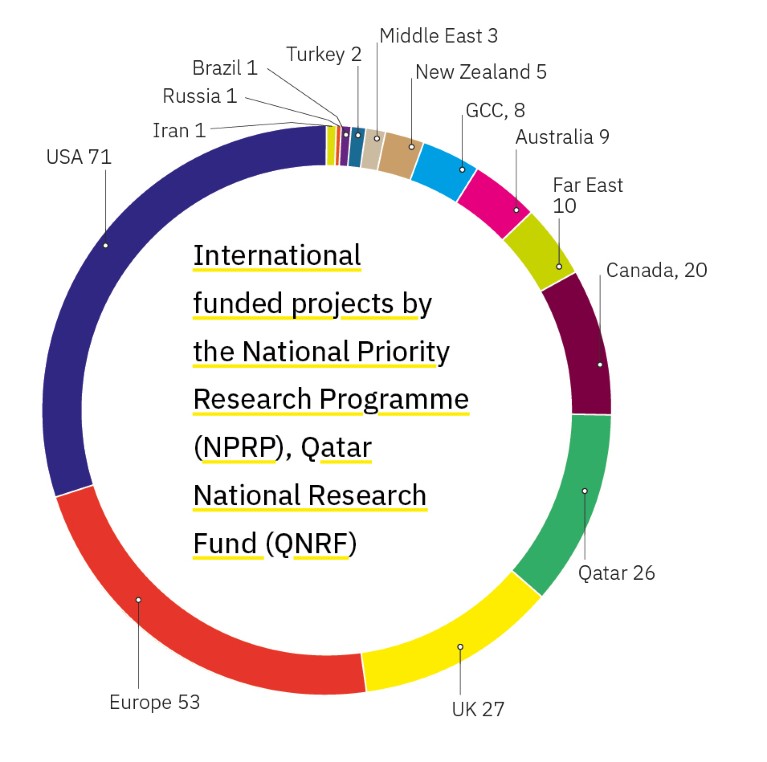
Qatar University’s internal funding programme was revamped recently to increase research impact and build research capacity. The university supports student research, enables concept development to help translate ideas into products, and encourages knowledge exchange with collaborating universities across the world. Aiman Erbad, director of research support at Qatar University, explains that long-term partnerships with top universities help build local capacity, leading to the emergence of strong research teams capable of tackling issues of national priority.
The university’s strategy is to support research with impact by initiating new funding mechanisms to strengthen internal collaboration between colleges and centres, international collaboration and industrial collaboration.
Qatar National Research Fund (QNRF) is a strategic partner for Qatar University’s external funding, mainly through the National Priority Research Programme (NPRP), adds Fadhil Sadooni, advisor to Qatar University’s vice-president for research and graduate studies. This programme funds international research projects of high scientific impact, which strengthen partnerships and have a potential impact on the development of Qatar’s society and economy.
Research with impact
In the 10 years leading up to 2015, Qatar University’s main goal was to lay the foundations for research, explains Husam Younes, the university’s director of research planning and development. The success of this phase is evident, he says, in the growing number of faculty at the university, the increased number of publications, the large number of collaborating institutions and the millions of dollars in research grants the university has received.
Now, the university is embarking on the second phase of the national development strategy, with a focus on impact. “All projects conducted in Qatar now need to fulfil certain criteria: they need to tackle defined national needs and challenges, produce tangible impacts, focus on areas with commercial and technological potential, promote public-private partnerships, and adopt a more cross-cutting interdisciplinary approach,” says Younes.

Qatar University’s Environmental Science Center (ESC) is leading several research projects to conserve marine species in the waters around the Qatar peninsula. Credit: Qatar University
“We’ve built an excellent infrastructure. Our main goal now is to focus on problem-based, collaborative and interdisciplinary research with measurable impacts. We are building a research platform and infrastructure that leverages capacity to facilitate the integration of research and graduate studies.”
The university’s 2014–2019 Road Map focuses on four key research areas, in line with the country’s future developmental needs according to the Qatar National Vision 2030 and other key strategic government plans. The four priority areas of research are energy, environment and resource sustainability; social change and identity; population, health and wellness; and information and communication technologies.
Environment and conservation
Qatar University’s Gas Processing Center is searching for novel treatment methods so that agriculture and industry can reuse groundwater, which comes to the surface during oil and gas exploration and production. The centre has signed an agreement with SNF Floerger in France, a leading polyacrylamide manufacturer, to develop cost-effective polymers for demulsifying this water.
At the Environmental Science Center (ESC), palaeontologist and centre director Hamad Al-Saad and geologist Fadhil Sadooni have been studying data on rock strata dating back to the Palaeozoic era, which lasted from 544 million to 245 million years ago. The rock, found while drilling three deep wells in Qatar, is 1500 metres thick. Their work adds to the understanding of this little-reported part of Qatar’s geology, and could eventually help in identifying hydrocarbon reservoirs.
The pearl oyster Pinctada radiata is indigenous to the Arabian Gulf. Oyster beds are often regarded negatively by some industries because of their ability to ‘foul’ underwater pipes and surfaces. But oysters, and many other organisms, are an important part of the sea-bed or ‘benthic zone’. The offshore oyster beds in Qatar are known for their diversity of benthic faunal species. Coastal development disturbs this ecosystem and P. radiata are often used as bio-indicators of environmental stress.
A team of researchers from the ESC investigated the effect of coastal development on the population structure of P. radiate and its associated fauna. The researchers found that the oyster populations were significantly affected in areas of high coastal development. They say their study suggests that oyster reefs and their associated fauna could be used to effectively monitor environmental disturbance in Qatar.
The Center for Advanced Materials (CAM), established in 2002, is investigating another aspect of biofouling. It is working with several industry leaders, including Qatar Petroleum and Shell, to investigate and monitor corrosion and biofouling of modified metals, alloys and polymers on ship hulls, pipelines and other surfaces in Qatar’s coastal areas. Prevention and control of biofouling costs government and industry hundreds of millions of dollars annually.
The centre, which hosts more than 40 faculty and staff, recently signed an agreement with Qatar Water and Electricity Company to develop ‘nano-enabled’ membranes using advanced nanomaterials for seawater reverse osmosis desalination. It is also working with Qatar Petrochemical Company to fabricate plastic heat absorbers that can improve passive heating or cooling in buildings to save electricity and reduce carbon dioxide emissions. The centre has other industrial collaborations, with strong output projects such as with Qatar Aluminium and with Qatar Fuel Additives Company, in areas related to nanotechnology, environment and water.
“CAM is also engaged in community outreach through its distinguished Al-Bairaq programme, which popularizes and develops interest in science and technology among secondary school students in Qatar,” says the centre’s director, Nasser Alnuaimi. Through the programme, students come together with university researchers to solve practical scientific problems in realistic simulations, he explains. The students formulate questions related to materials science, build a research plan, use state-of-the-art technologies to conduct investigations, and report their findings in a public forum. Representatives from business and industry evaluate their results. This unique programme won the WISE award in 2015.
Keeping Qatar healthy
Qatar University’s Biomedical Research Center (BRC) was established in 2014 on the strength of the university’s successful 30-year-old biomedical programme.
“Our centre is working in line with the overall strategy of the country,” says its director, Asma Althani, who is also dean of Qatar University’s College of Health Sciences. “We’ve chosen our areas of research to complement, and not duplicate, what others are doing in Qatar,” she says.
BRC researchers, in collaboration with colleagues at Qatar University and other international institutions, investigated the use of carbon nanotubes to enhance the survivability and differentiation potential of neural stem cells derived from the human olfactory bulb, a part of the forebrain responsible for receiving input about odours.
Neural stem cells have the ability to differentiate into the major cell types of nervous tissues. Previous studies demonstrated their ability to restore cognitive and motor deficits in rat models of Parkinson’s and Alzheimer’s diseases. The researchers transplanted carbon nanotubes along with neural stem cells into an in vitro system in which neurodegenerative disease had been chemically induced, restoring cognitive deficits and neurodegenerative changes. The carbon nanotubes were found to provide support for neural stem cells and enhanced their therapeutic potential. The researchers hope this could be a promising candidate for cell-based therapies for neurodegenerative diseases.
Ischaemic heart disease was the leading cause of death in Qatar in 2012. BRC researchers are using zebrafish, which have genomic similarity to humans, and chicken embryos, with their similar heart structure, as models to closely study heart disease.
Recently, a team of BRC researchers found a significant association between a polymorphism —a genetic variation— in the gene that codes for the vitamin D receptor, and coronary artery disease. The receptor enables the biological roles of vitamin D in the body when it binds to it. The researchers found that people carrying the genetic variation, especially those who smoked, had an increased risk of significant atherosclerotic lesions in their coronary arteries.
Qatar University has invested significantly in communicable diseases research. BRC scientists are looking into infectious diseases common in the country, such as MERS-CoV, influenza viruses, enteric viruses, and multiple drug-resistant bacteria. In addition to studying the epidemiology of MERS-CoV in humans and camels, the team is interested in evaluating human immune responses to virus infection. They screened thousands of sera samples collected from high- and low-risk groups. As a second step, they are deciphering the humoral immune response in seropositive individuals to understand the functionality of antibodies in these individuals.
On the other hand, antimicrobial resistance is a major global public health concern. With our partners from the Qatari ministries, we focus on profiling antimicrobial resistance in the veterinary sector using current molecular and epidemiological tools. Our preliminary data revealed significant prevalence of multidrug-resistant bacteria, including those for third-generation cephalosporin.
Studying social change
Researchers at Qatar University are not focused only on natural sciences. The State of Qatar has transformed significantly in recent decades into a major exporter of oil and gas. The economic changes have not only affected people’s lifestyles and what the country looks like, but have also changed the fabric of Qatari society. An estimated 88% of the country’s 2.5 million population is now comprised of migrants, and the changes in the country’s social fabric need examining.
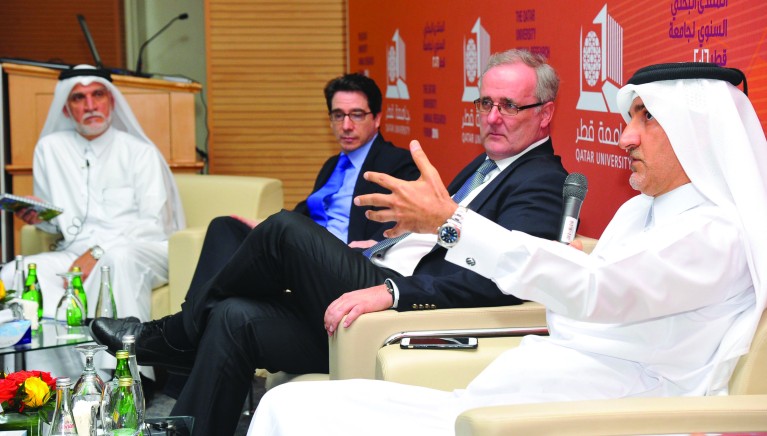
(Left to right) Dr Darwish Abdulrahman Al-Emadi, chief strategy and development officer, Qatar University; Lucien Randazzese, director of the center for innovation, strategy and policy, SRI International; Martin Gitsels, vice president and head of corporate technology, Siemens Russia; Mohammed Youssef Al-Mulla, managing director and CEO, QAPCO. Credit: Qatar University
This is the aim of Qatar University’s Social and Economic Survey Research Institute (SESRI), says its director, Hassan Al-Sayed. The institute’s objective is to provide high-quality survey data to guide policy formulation, priority setting, and evidence-based planning and research in the social and economic sectors. “Many of our recent and on-going projects address current important topics in Qatar, such as education, social living, and views on Qatar hosting the FIFA World Cup,” he says.
Last year SESRI published the results of a survey conducted in 2014 of more than 2,000 Qatari nationals and white-collar expatriates on their perceptions of the potential impacts of the Qatari World Cup on their quality of life. They found that the respondents overwhelmingly thought that the World Cup would foster national pride. Approximately half of the respondents thought it would change Qatari traditional culture. Nearly half of expatriates, compared with 36% of Qataris, said they “strongly agreed” that they would volunteer for the World Cup. And most of those surveyed said they thought the event would develop sport and sport culture in the country.
Another survey of almost 3,000 Qataris and non-Qataris found that nationals were significantly less likely to be satisfied with the country’s healthcare system than expatriates were. Among the Qatari citizens surveyed, non-users of the system were more likely to be less satisfied than recent users. The opposite pattern was observed among expatriates. “These differences may stem from different expectations with respect to healthcare services. Understanding these expectations may have important policy implications for cross-cultural contexts,” the researchers conclude.
Qatari nationals are also keen to maintain the sponsorship, or kefala, system, which was criticised by human rights organizations. Qatar introduced reforms to that system — which required citizens, usually employers, to be legally responsible for the visa and legal status of unskilled labourers — near the end of 2016.
Information and Communication Technologies (ICT)
In Qatar and across the world, there is a huge demand for research in computing, as increased knowledge will advance many disciplines. Research funding for this area from QU, QNRF and industry has grown significantly in recent years. Areas of particular interest include network and distributed systems, software engineering and information security, data science, visual computing and robotics.
“Faculty and students from the computer science and engineering department led outstanding research in these fields, winning awards and publication. Innovative projects and research that tackle real-life complex problems made a real difference,” says department head, Somaya Al-Maadeed, who is also the coordinator of the Visual Computing and Robotics research group.
Network and computer security is one of the fastest-growing research areas in computing. Recently, a team from QU proposed a novel channel-, queue-, and delay-aware framework, and policies to allocate resource and joint routing. Results show that this method significantly reduces delays in resource allocation in next-generation broadband wireless systems compared with existing algorithms.
KINDI Center for Computing Research is an acronym for Knowledge Intelligence, Networked Data and Interdisciplinary research. The centre hosts multi-disciplinary teams through its Smart Design Laboratory.
KINDI director, Noora Fetais, says: “Cyber-attacks are more targeted and sophisticated than ever before. Malicious programs are now capable of stealing confidential data and disabling network infrastructure. Qatar, like many other fast-growing nations, should be prepared to face any cyber-threat scenario. Attacks on critical infrastructure can disable machinery, cause catastrophic equipment failure, and even result in loss of life.”
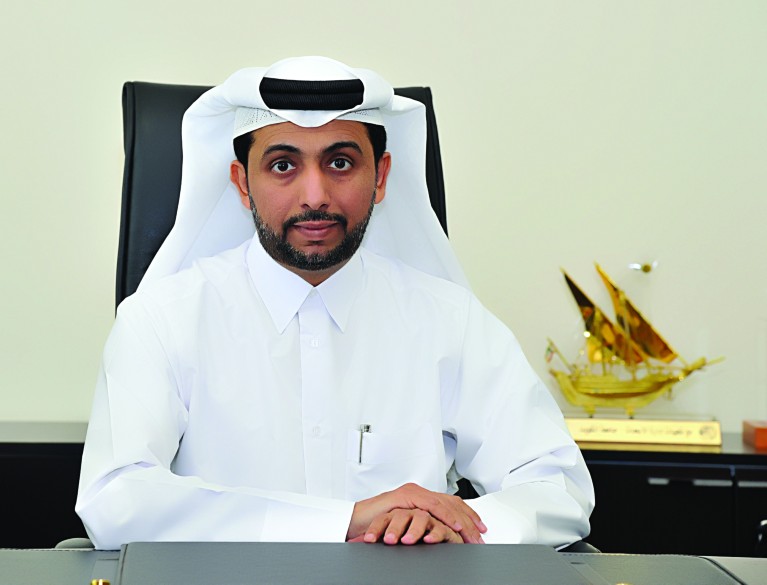
Dr Hassan Al-Derham, president of Qatar University Credit: Qatar University
The future
Qatar University has laid out bold and transformative ambitions for graduate education. Its strategic plan emphasizes the need to meet the nation’s growing demand for new programmes that contribute to the realization of Qatar Vision 2030. Qatar University prides itself on nurturing the development of highly qualified scholars, researchers and independent thinkers.
Graduate Studies
Education in Qatar University is responsive to a growing demand for competent and well-trained graduates. Education at Qatar University has grown substantially in recent years from having only diploma programmes in education and a single Master’s degree programme in business administration, to an impressive range of one graduate certifi cate, four diploma programmes in education, 27 Master’s degree programmes, one pharmD programme, and eight PhD programmes in 19 specialist areas.
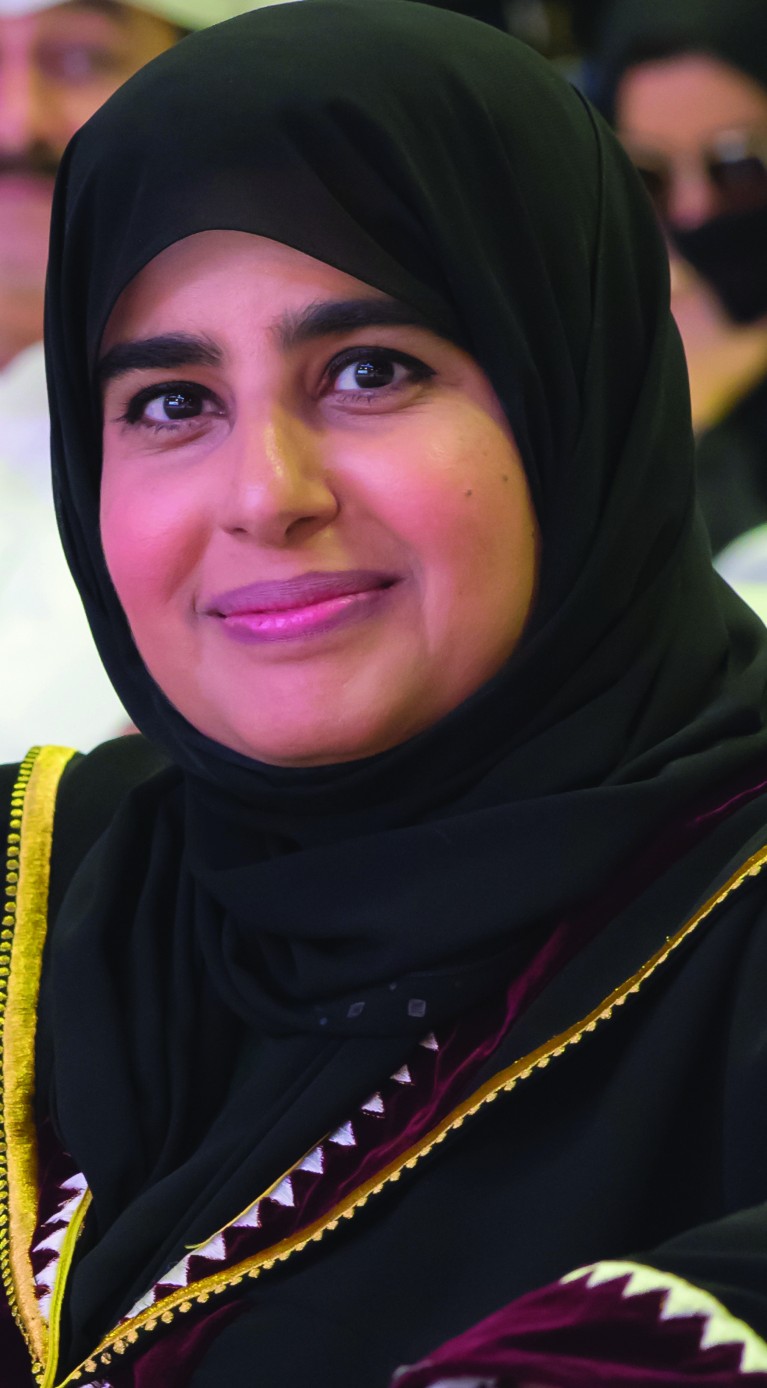
Dr Mariam Al-Maadeed, Qatar University's vice-president for research and graduate studies. Credit: Qatar University
As demand and student enrolment continue to increase, the number of graduate programmes offered at Qatar University is expected to grow substantially. Demography, market needs, Qatar’s vision and increasing global interconnectedness are the main driving forces behind the demand. In addition to taking a leading role in identifying market-driven graduate degree programmes that are viable and beneficial to the community, QU is working on increasing the visibility of graduate activity at the university, increasing support and resources for the development of graduate faculty and staff, coordinating and implementing new and innovative graduate programmes, and supporting quality assurance.
A Graduate Academic Support Unit was recently established to provide supplementary support to graduate students and to help facilitate a positive community. “This year we started a graduate faculty event — a two-day initiative of professional development for graduate faculty covering various topics under the umbrella theme of ‘Maximising the Mentoring Potential’,” said Ahmed Elzatahry, the dean of graduate studies.
“Qatar University is the largest national institution serving government, society and industry in Qatar,” says Mariam Al-Maadeed. It has a wide range of disciplinary and multidisciplinary degree programmes, a large and strong research faculty, good funding, and a strong research infrastructure, she adds.
Qatar University is planning to focus on collaborative research and the needs of the country, she says.
“As a national university we are keen to build capacity in all areas,” says university president Hassan Al-Derham. The university provides international scholarships for Qatari students to study abroad and build skills and capabilities to bring back. “Our university has enabled Qatari citizens to become ministers, presidents of agencies, and influential members of government,” he says.
The university is playing a role in sustainable development by providing high-quality education and opportunities, and excellent facilities, says Al-Derham. “Scientific research represents an important pillar in the educational process in Qatar. Our motto is: research that crosses boundaries.”

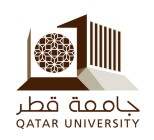
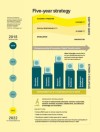 Five-year strategy
Five-year strategy
 Qatar University in numbers
Qatar University in numbers
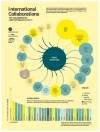 International Collaborations
International Collaborations